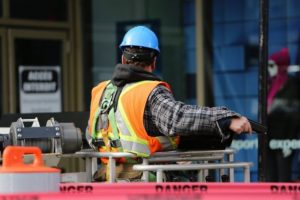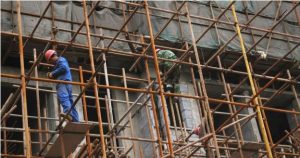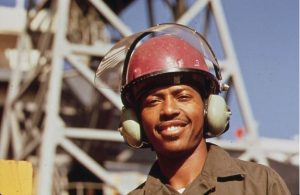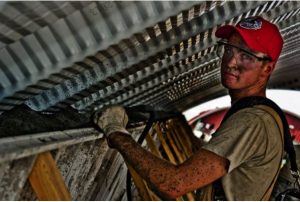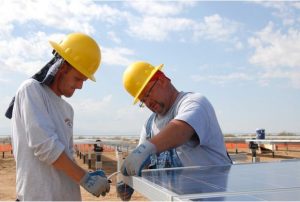7 TIPS TO STAY SAFE AND HEALTHY WITH OFFICE WORK
It’s true that some jobs will generally be riskier than others. However, no matter what kind of job you’re doing, you’ll want to stay safe and healthy. Even seemingly innocuous work environments like offices can come with their own occupational hazards. By being fully aware of them, you can mitigate the health hazard and safety risk to yourself. We spoke with Jessica Chen, who works for a cheap essay writing service and spends most of her day sitting in front of a computer screen. She gave us some useful tips to make it easier to stay safe and healthy at work.
Know your Environment
No matter where you work, you need to learn about your work environment. In an office, you need to learn about everything, from where the cleaning supplies can be found to how to correctly use the copier. Most workplaces will provide training to help people stay safe at work. However, it is still upon you to stay mindful of your environment and watch out for any hazards that might be unfamiliar. If you ever have to deal with anything heavy, you’re going to have to try to keep your back straight.
Stay Relaxed
Believe it or not, one of the positions that puts you at the most risk is sitting. If you sit incorrectly then you may actually suffer from injuries to your neck and back. If you can seek audience with your boss then ask them to buy some ergonomic chairs and desks. This will pay off in a big way for you and your colleagues. As for your sitting, make sure you sit with your hips and shoulders aligned to prevent your back from suffering from undue pressure.
Don’t forget about your Eyes
Your eyes are another part of your body that you shouldn’t neglect. When you sit in front of a computer for a prolonged amount of time, then you are posing some serious safety risks for your eyes. They will suffer from long exposure to the screen. In light of this exposure, you need to take regular breaks in order to give your eyes time to recover. Also, don’t sit close to your screen as that can be detrimental for your eyes. Your best bet is to look away from the screen every 20 or 30 minutes. You should also get some screen covers for your laptop to filter most of the blue light that comes through. Blue light is usually the most harmful part of the light that comes from a computer screen.
Know all the Emergency Protocols of your Workplace
Every workplace has an emergency protocol in place and it is your duty to know everything about it. For starters, you need to know where all the emergency exits are. This doesn’t just apply to the floor on which you work, but also the floors that you don’t frequent as much. This will be useful knowledge when there is some kind of emergency at your place of work, such as a fire. Perhaps the most important factor that could save your life is knowing how to get out of a building in the quickest way. So make sure you don’t miss those fire drills.
Speak up when you have to
If you don’t like the conditions at your place of work, or you feel like the safety has been compromised, then do not hesitate to speak up. It is your boss’s duty to make the workplace as safe as possible, from the structural integrity of the building to the air conditioning. So when the air conditioner isn’t working very well and the office is particularly hot, do not hesitate to tell your boss about it. If you have to go to a ton of supplies to get to the photocopier because it happens to be located in the supply closet, then you’ll have to tell your supervisor about it so they can rectify the issue. If your boss does nothing about it, even after you repeatedly tell them about the appalling conditions at your place of your work, contact the Occupational Safety and Health Administration and let them know.
Be Kind to your Body
Try to take care of your body first before having great expectations of your boss to take care of it. It’s not a good idea to binge on junk food or go to work with a hangover. Working in an office is also likely to make you inactive, which means you will have to exercise daily to keep your body in shape and your energy levels high in order to avoid lethargy. Stay hydrated, watch your nutrition, and don’t overdo the sugar.
Do Breathing Exercises
Work can be quite stressful and, if left unchecked, that stress can affect your health in a negative way. As often as you can, stop what you’re doing and take at least 5 deep and slow breaths to let out the stress. Deep breathing exercises are known to help relax and relieve stress.
Know when to give yourself a Break
It’s tempting to keep going at your work even when your body is throwing out all kinds of protests. It’s not, however, a good idea to go to work when you’re ill. It’s not good for your body and it’s certainly not good for your colleagues’ bodies because they might catch whatever you have. If you’re not feeling so well, ask your boss for a break so you can get better. It’s better to have one person gone with the flu than the whole team.
Know your Rights
As a worker in the United States, you’re entitled to healthy and safe working conditions stipulated to the Occupational Safety and Health Administration. By knowing your rights and responsibilities, you’re empowered to ensure that you observe your responsibilities and your employer observes your rights.
About the author
Samantha R. Gilbert has been working as a journalist at an online-publishing agency in New York, USA for 2 years. She is also professional writing expert in such topics as blogging, modern art and education. Meet Samantha on Google+.

